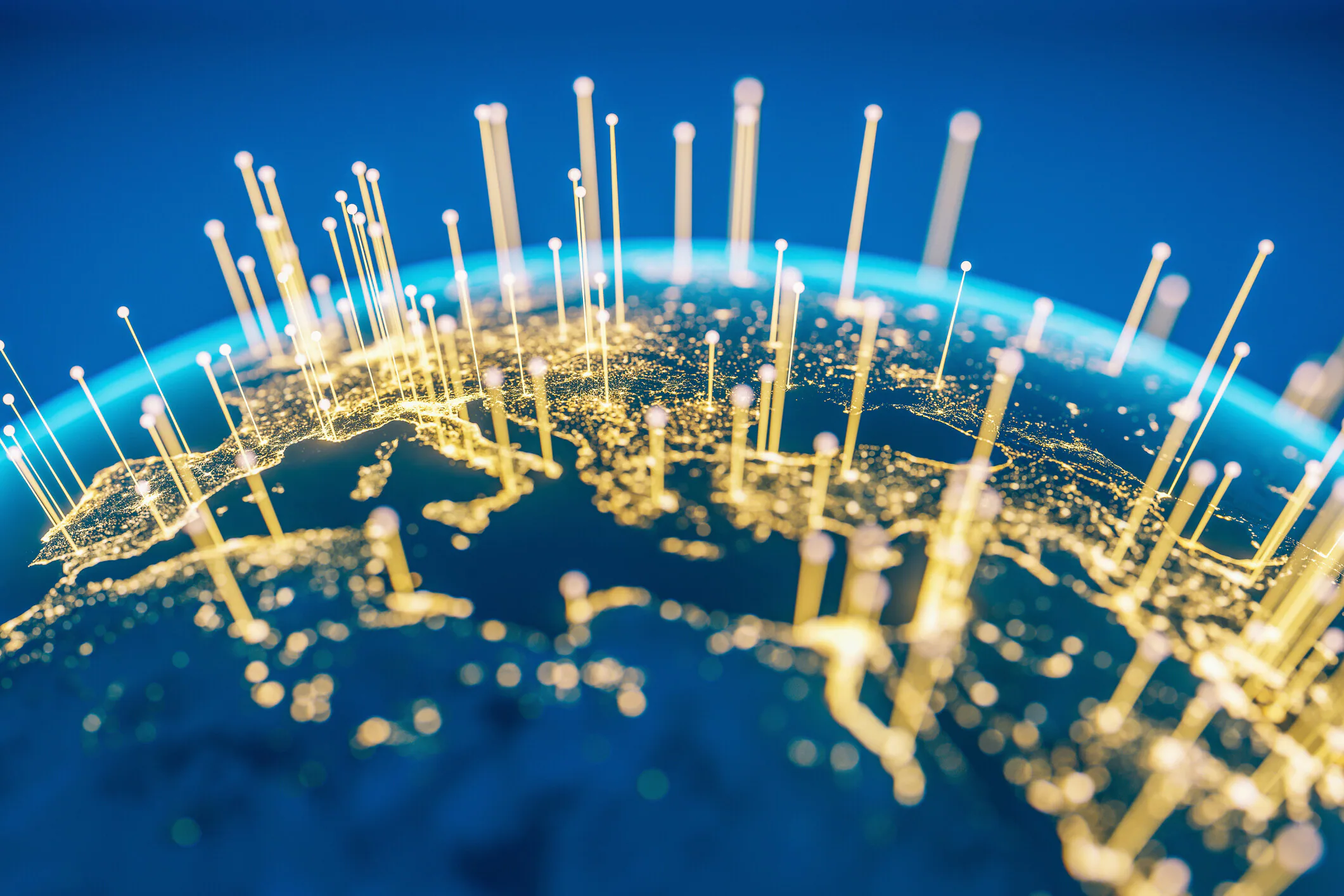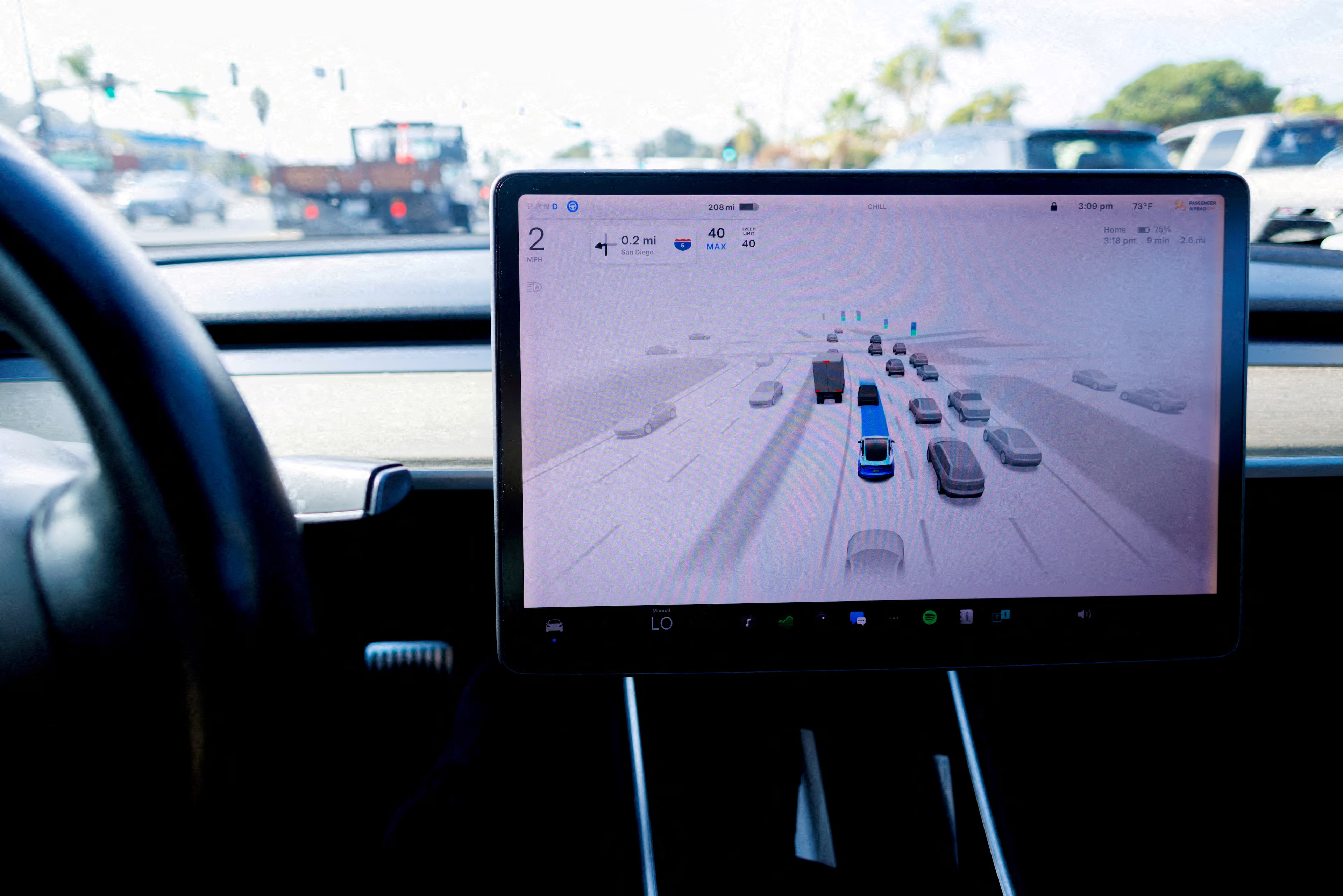Technology has become a centrepiece of geopolitical power struggles, with nations increasingly wary of relying on foreign tech for critical systems.
Strategic competition over AI is marked by rising trade barriers, competing AI ambitions and a scramble to secure control over data and its infrastructure.
Balancing between collaboration and competition will shape not only who leads in AI, but also how safely and equitably it is integrated into our world.
세계경제포럼, 2025년 7월 24일 게시
Mark Esposito
Faculty Associate, Harvard Center for International Development, Harvard Kennedy School of Government

From social media bans to semiconductor export controls, technology has become a centrepiece of geopolitical power struggles. Even amid intensifying competition, the imperative to establish common AI baselines, particularly for safety, transparency and infrastructure resilience, is growing more urgent.
In the wake of technology distrust between major powers, nations are increasingly wary of relying on foreign tech for critical systems. The United States and China, in particular, have entered a new phase of strategic competition over artificial intelligence (AI) and the infrastructure that powers it.
This competition is marked by rising trade barriers, competing AI ambitions and a scramble to secure control over data and the digital tools of the future. International relations in 2025 are defined as much by geotechnology disputes as by traditional geopolitics, with global forums and alliances being reshaped by debates over digital dominance.
Have you read?
- 3 surprising findings in this year’s Global Risks Report
- Geopolitical tensions, AI and more are complicating the cyberspace. Here’s what to know
A striking feature of this landscape is the politicization of data itself. As AI systems grow more powerful, the data they rely on has turned into a strategic asset. Cross-border data flows that once seemed routine now face stricter oversight or outright restrictions under the banner of “digital sovereignty”.
Governments from the European Union to China are implementing laws to keep sensitive data within their borders, fragmenting the once-borderless cloud into national silos. In this environment, countries fear that allowing data to be processed abroad could expose them to surveillance or foreign leverage, entwining technology with national security.
Data centres: from backrooms to battlegrounds
Data centres are now critical infrastructure in the global digital economy. These sprawling server farms handle over 95% of the world’s internet traffic, underpinning everything from streaming video to cloud AI services.
Once viewed as back-end infrastructure, data centres have evolved into strategic assets – the digital age’s equivalent of power plants or ports. The United States alone hosts roughly 51% of the world’s data centres, a concentration that highlights both the country’s digital dominance and the reliance of other countries on US-based clouds. This dominance has prompted other nations and regions to race to build up their own data centre capacity, eager to ensure their data resides on home soil.
Data centres have thus become a focus of industrial policy. Around the world, countries are offering tax incentives and fast-track permits to attract new server farms. Emerging economies view data centres as the bedrock of future growth, luring big tech firms to set up regional hubs, particularly in Asia, where a data centre “gold rush” is under way.
The goal is not just economic; it is also about digital resilience. Hosting a major data centre can attract related industries such as cloud services and AI research, while reducing dependence on foreign connectivity. In a crisis, controlling domestic data storage could be as important as controlling energy supplies.
Nevertheless, with this new importance comes new vulnerability. Geopolitical tensions cast a shadow over the data centre industry, as the supply chains for critical components – from advanced chips to fiber-optic cables – are now entangled in trade disputes.
Export controls and sanctions can choke off access to the latest processors needed to operate modern data centres. For example, high-performance AI chips made by US firms have been caught up in export bans, leaving operators in China scrambling for alternatives.
Such restrictions underscore that a data centre is only as advanced as the components it can import, moving these facilities from the backrooms of tech to the foreground of global security concerns.
Trade wars and tech decoupling intensify
The US and China’s strategic rivalry over AI has deepened, giving rise to talk of a new “digital Cold War”. Both superpowers view leadership in AI as a defining element of national power and are marshalling state resources to secure it.
Washington has pursued an aggressive strategy of “tech decoupling” aimed at slowing China’s technological rise. Beginning with sweeping export controls in 2022, the US has systematically tightened the flow of advanced chips and equipment to China.
This campaign peaked by mid-2025 when US authorities banned even specialized AI chips designed to meet earlier export rules, effectively closing the last major chokepoint for top-tier AI hardware. The message was clear: the US intends to maintain a hardware advantage in AI at all costs.
The result is an increasingly fragmented global tech ecosystem. US allies in Europe and Asia find themselves pressured to choose sides or split their supply chains. Many have aligned with US export curbs on China to some degree, yet few are comfortable with a complete rupture, given China’s role as both a market and supplier.
New tech alliances are emerging, such as the “Chip 4” alliance – comprising the US, Japan, Taiwan and South Korea – to coordinate semiconductor strategy, while China cultivates partners through its Digital Silk Road.
This tit-for-tat climate has observers worrying about a complete decoupling of the US and Chinese tech spheres, which could force other countries to navigate two separate technology universes with incompatible standards and restricted flows of hardware and data.
The road ahead: cooperation or fragmentation?
As of mid-2025, the geopolitics of AI stands at a crossroads. On one path, the world could slide further into fragmentation, with a digital iron curtain separating US-led and China-led tech spheres. In this scenario, data centres, networks and AI ecosystems would be divided by incompatible standards and mutual suspicions.
On another path, increased dialogue could prevent the worst outcomes. Recent AI summits suggest a widespread desire to find common ground or at least establish guardrails to prevent competition from spiraling into open conflict. The coming years will test whether major powers can agree on baseline norms for AI safety and digital trade, despite their rivalry.
The promise of AI to solve global challenges will be difficult to realize if the world fractures into isolated technological camps. The age of technological rivalry is here, but whether data centres become targets of conflict or backbones of a connected global economy will depend on choices made now by policy-makers and industry leaders.
Balancing between collaboration and competition will shape not only who leads in AI technology, but also how safely and equitably it is integrated into our world.



